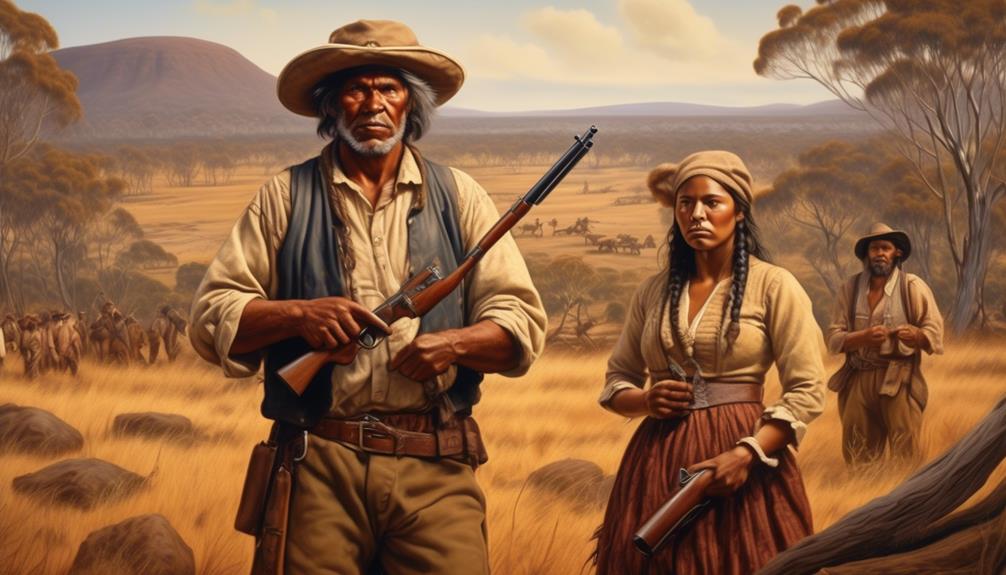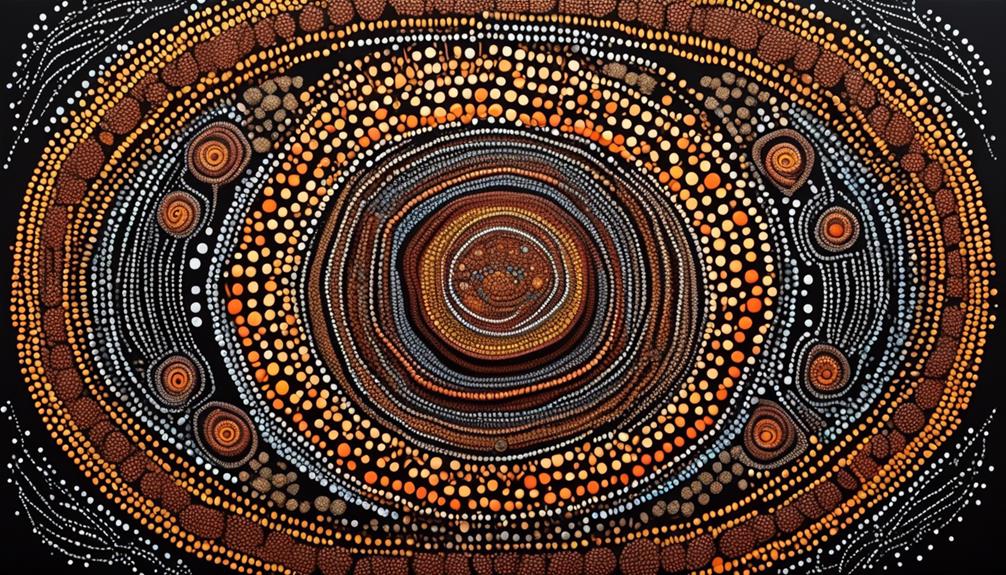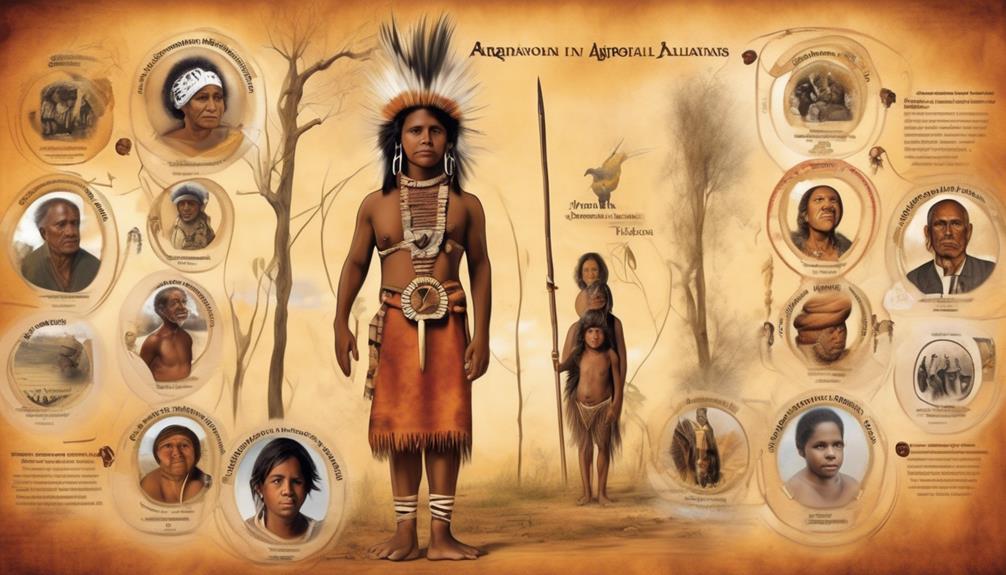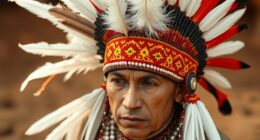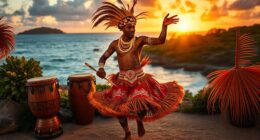The discussion about the legality of shooting an Aboriginal person in Australia delves into a complex and often overlooked chapter of the country’s past. It sheds light on the deep-rooted bias and violence faced by Indigenous communities throughout history.
From the early colonial period to the present day, the legal frameworks surrounding the shooting of Aboriginal people have evolved in response to changing social and political landscapes. As we explore this topic, we'll uncover the various laws, policies, and events that have shaped the legal status of shooting an Aboriginal in Australia.
Ultimately, this exploration will paint a sobering picture of the country's treatment of its Indigenous population.
Key Takeaways
- Systemic violence and conflict between European settlers and Aboriginal people
- Martial law and Indigenous resistance suppression
- Suspension of civil liberties and forced relocation of Indigenous communities
- Implications for legal and social discourse, including systemic discrimination and violence
Early Colonial Period
During the early colonial period in Australia, the interactions between European settlers and Aboriginal people were marked by significant conflict and violence. Colonial violence against the Indigenous population was systemic and often involved massacres, forced relocations, and the imposition of European laws and customs on Aboriginal societies.
The European settlers, driven by a sense of racial superiority and a desire for land and resources, frequently resorted to violent means to establish their dominance.
In the face of such colonial violence, Indigenous resistance was widespread and varied. Aboriginal communities employed diverse tactics to resist the encroachment of European settlers, including armed uprisings, guerrilla warfare, and strategic alliances between different Aboriginal groups. Additionally, many Aboriginal individuals and communities sought to maintain their cultural practices and traditional ways of life as a form of resistance against the imposition of European norms.
The early colonial period in Australia thus represents a dark chapter in the nation's history, characterized by the brutal subjugation of the Indigenous population by European settlers. However, it also demonstrates the resilience and strength of Aboriginal communities in the face of overwhelming adversity. Understanding this history is crucial for acknowledging and addressing the ongoing impact of colonial violence on Indigenous Australians and for supporting their ongoing struggles for liberation and justice.
Frontier Wars
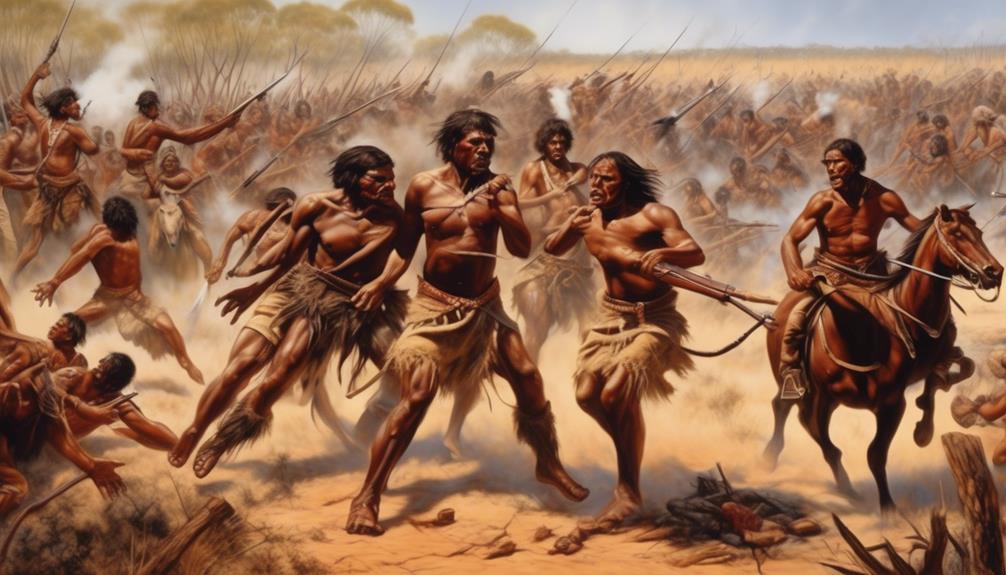
The Frontier Wars in Australia saw sustained conflict and violence between European settlers and Aboriginal peoples, shaping the landscape of colonial expansion and Indigenous resistance. These frontier conflicts were marked by significant bloodshed and dispossession as European settlers sought to expand their territory and assert dominance over the land. Indigenous resistance, however, was a powerful force that challenged European encroachment and sought to protect traditional lands and ways of life.
- Guerrilla Tactics: Indigenous groups often employed guerrilla warfare tactics, utilizing their knowledge of the land to their advantage and launching surprise attacks on European settlements and military forces.
- Resistance Movements: Various Indigenous resistance movements emerged, uniting different tribal groups in a common struggle against the colonial forces and their expansionist agenda.
- Cultural Preservation: Indigenous communities actively resisted cultural assimilation and the destruction of their cultural practices, ceremonies, and languages, seeking to preserve their unique identities and traditions.
- Continued Impact: The legacy of the Frontier Wars and Indigenous resistance continues to shape the socio-political landscape of Australia, influencing contemporary discussions on land rights, sovereignty, and reconciliation.
The Frontier Wars and the Indigenous resistance against colonial forces represent a pivotal part of Australia's history, highlighting the resilience and determination of Aboriginal peoples in the face of overwhelming adversity. Understanding and acknowledging these historical struggles is crucial in the ongoing pursuit of justice, equality, and liberation for Indigenous communities.
Martial Law
Martial law was a significant tool used by colonial authorities to enforce their rule in Australia. This period saw the suspension of civil liberties and the imposition of harsh measures to suppress Indigenous resistance.
Understanding the impact of martial law on Aboriginal communities is crucial to comprehending the historical context of legal shootings of Aboriginals in Australia.
Colonial Military Enforcement
Under colonial military enforcement, the Aboriginal people faced severe and often deadly consequences for resisting the imposition of martial law. This period of military intervention was deeply entrenched in the historical context of colonial expansion and the subjugation of Indigenous populations. The ramifications of colonial military enforcement were devastating, perpetuating a cycle of violence and oppression that continues to impact Aboriginal communities today.
- Forced Displacement: Aboriginal communities were forcibly removed from their ancestral lands, leading to the destruction of cultural and spiritual connections.
- Violent Suppression: The use of military force resulted in violent confrontations and massacres, causing immense suffering and loss of life among the Aboriginal people.
- Cultural Assault: The imposition of martial law sought to erode traditional Indigenous governance systems and impose colonial authority.
- Inter generational Trauma: The legacy of colonial military enforcement has led to intergenerational trauma, perpetuating social and emotional distress within Aboriginal communities.
Indigenous Resistance Suppression
During the era of colonial expansion, Indigenous resistance to suppression through martial law played a pivotal role in shaping the fraught dynamics between Aboriginal communities and colonial authorities. The imposition of martial law aimed to quell Indigenous resistance and maintain colonial oppression. Below is a table summarizing the legal implications and community impact of Indigenous resistance suppression:
| Legal Implications | Community Impact |
|---|---|
| Criminalization of resistance leaders | Heightened fear and trauma |
| Arbitrary arrests and detentions | Disruption of community life |
| Harsh penalties for defiance | Erosion of cultural practices |
| Limited access to legal recourse | Loss of trust in colonial justice system |
Understanding the historical context of Indigenous resistance suppression is crucial in comprehending the ongoing struggle for liberation and justice.
Civil Liberties Suspension
Indigenous communities faced severe restrictions on their civil liberties, as colonial authorities implemented measures to suppress resistance through the imposition of martial law. This suspension of rights had a profound historical impact, perpetuating systemic oppression and injustices against Indigenous peoples.
- Forced relocation: Indigenous communities were forcibly relocated to reserves or missions, disrupting traditional lifestyles and cultural practices.
- Curfews and pass systems: Strict curfews and pass systems were enforced, severely limiting the freedom of movement for Indigenous peoples.
- Censorship and control of information: Colonial authorities censored information and restricted communication, preventing Indigenous peoples from organizing and voicing their grievances.
- Arbitrary arrests and detention: Indigenous individuals were subjected to arbitrary arrests and detention without due process, further eroding their rights and freedoms.
These measures exemplify the deliberate suppression of civil liberties, leaving a lasting impact on Indigenous communities.
Native Police Forces
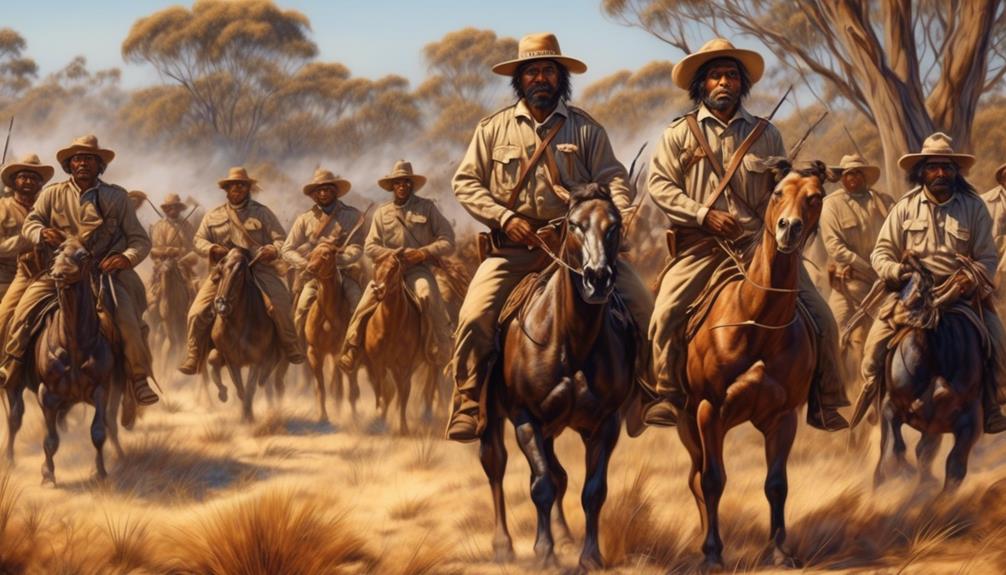
The establishment of Native Police Forces in Australia represented a significant development in the history of interactions between settlers and Aboriginal communities. These forces, comprised of Indigenous troopers and led by European officers, had a profound cultural impact. They were instrumental in enforcing colonial authority and subjugating Aboriginal populations. Their formation must be understood within the historical context of Indigenous resistance to European colonization. The use of Native Police Forces was a deliberate strategy by the colonial authorities to suppress any form of resistance from the Aboriginal communities.
The impact of Native Police Forces on Aboriginal communities was devastating. They were often complicit in massacres, forced relocations, and the enforcement of discriminatory laws. The use of Indigenous troopers in these forces also created deep divisions within Aboriginal societies, leading to long-lasting social and cultural repercussions. The trauma inflicted by the actions of these forces continues to reverberate through generations.
Understanding the role of Native Police Forces is crucial in comprehending the ongoing effects of colonialism on Aboriginal communities. The legacy of these forces underscores the systemic oppression and violence endured by Indigenous peoples. As we confront this history, it's essential to recognize the resilience and strength of Aboriginal communities in the face of such immense adversity. This understanding can serve as a catalyst for meaningful change and restorative justice.
Protection Acts
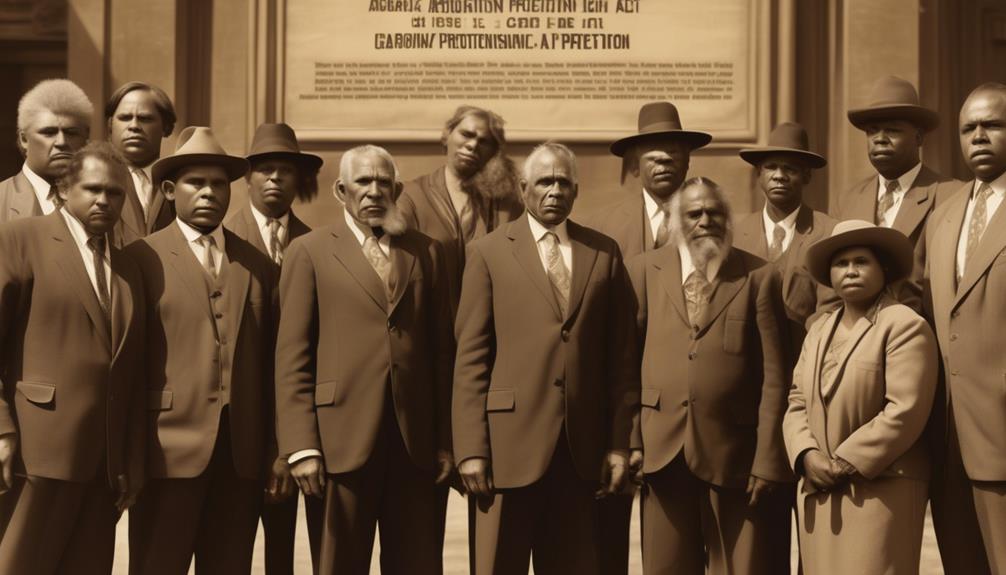
Protection Acts were legislative measures implemented by the Australian government to regulate and control the lives of Aboriginal people, often resulting in severe restrictions on their freedom and autonomy. These acts were purportedly designed to 'protect' indigenous populations, but in reality, they were used to dispossess them of their lands, culture, and autonomy. The purported aim of these acts was to provide for the safety and welfare of Aboriginal people, but in practice, they served to enforce government control over every aspect of their lives.
- Forced assimilation: Protection Acts sought to assimilate Aboriginal people into European society by forcibly removing children from their families and communities and placing them into missions or government-controlled institutions.
- Restricted movement: These acts imposed strict controls on where Aboriginal people could live, work, and travel, severely limiting their freedom of movement and ability to maintain traditional connections to their lands.
- Controlled wages and property: The government exerted control over Aboriginal people's wages and property, often paying them far below the minimum wage and managing their finances without their consent.
- Suppressed cultural practices: Protection Acts sought to eradicate indigenous languages, cultural practices, and traditions, aiming to force Aboriginal people to adopt European ways of life.
These measures were a direct assault on Aboriginal rights and civil liberties, leading to widespread indigenous resistance and activism aimed at overturning these oppressive policies. The legacy of these Protection Acts continues to impact Aboriginal communities, highlighting the ongoing struggle for liberation and justice.
The Queensland Act
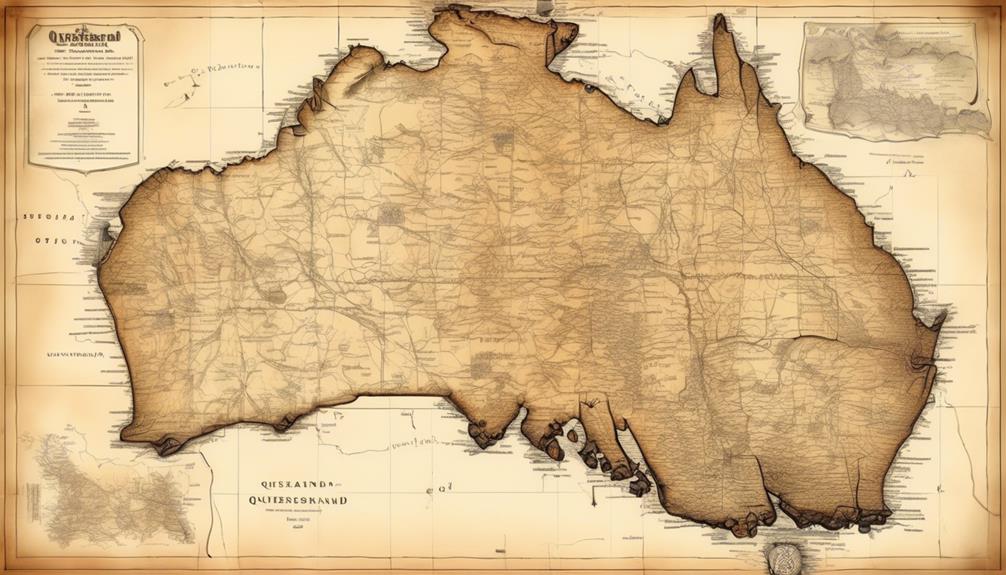
The Queensland Act has had significant implications for the legal shootings of Aboriginals in Australia. It's crucial to examine the enforcement of this act and its impact on Aboriginal communities.
Understanding the historical context and legal framework of the Queensland Act is essential for comprehending the complexities of this issue.
Queensland's Aboriginal Shooting
Despite the historical context and the complexities surrounding Queensland's Aboriginal shootings, it's essential to analyze the impact of the Queensland Act on the indigenous community and its implications for contemporary legal and social discourse.
The Queensland Act had profound and enduring effects on the Aboriginal population, shaping their relationship with the legal system and impacting their social standing within Australian society.
- Systemic Oppression: The Queensland Act institutionalized the oppression of Aboriginal people, perpetuating a system of discrimination and violence.
- Inter-generational Trauma: The Act's legacy continues to inflict inter-generational trauma within Aboriginal communities, affecting their social and psychological well-being.
- Legal Repercussions: The Act's impact on indigenous legal rights and land ownership continues to reverberate in contemporary legal battles.
- Social Justice Movements: Understanding the Queensland Act is crucial for informing and empowering present-day social justice movements advocating for indigenous rights and reconciliation.
Legal Implications and Enforcement
The Queensland Act established a legal framework that significantly impacted the rights and social standing of the Aboriginal population in Australia. The legal implications of this act were profound, as it effectively sanctioned violence against Aboriginal people, leading to a culture of fear and oppression. The enforcement of this act perpetuated a historical context of systemic discrimination and violence, further marginalizing Aboriginal communities. The cultural impact was devastating, as it entrenched a narrative of inferiority and dispossession. This historical context continues to reverberate through the generations, shaping contemporary social dynamics and perceptions. To better understand the ramifications of the Queensland Act, the following table provides a succinct overview of its legal implications, enforcement, and cultural impact.
| Legal Implications | Enforcement | Cultural Impact |
|---|---|---|
| Sanctioned violence against Aboriginal people | Perpetuated through official channels | Entrenched narrative of inferiority and dispossession |
Impact on Aboriginal Communities
Pivoting from the historical context of systemic discrimination and violence perpetuated through the Queensland Act, the enduring impact on Aboriginal communities is evident in the entrenched narrative of inferiority and dispossession that continues to shape contemporary social dynamics and perceptions.
The Queensland Act has had a profound impact on cultural identity, as it has contributed to the erosion of traditional practices and knowledge, leading to a disconnect between generations. Generational trauma persists, as the legacy of violence and oppression continues to affect the mental and emotional well-being of Aboriginal communities.
Community healing and reconciliation remain ongoing challenges, as the scars of historical injustices endure, impacting relationships within and outside the community. Overcoming these deep-seated effects requires continued support for the revitalization of cultural identity and concerted efforts towards healing and reconciliation.
The Western Australia Act

The Western Australia Act significantly impacted the legal framework governing the shootings of Aboriginals in Australia. This Act, enacted in 1829, formalized the establishment of the Swan River Colony, giving rise to the state of Western Australia. Under this Act, the rights of Aboriginal people were further disregarded, perpetuating the colonial military enforcement and suppressing Indigenous resistance.
| Western Australia Act | Impact on Aboriginal Rights |
|---|---|
| Formalized colonial rule in Western Australia | Further diminished Aboriginal land rights |
| Enabled the imposition of colonial laws | Limited legal protections for Aboriginal people |
| Established a legal framework for colonial military enforcement | Exacerbated violence and dispossession of Indigenous communities |
The Western Australia Act consolidated the authority of the British colonizers, enabling the imposition of discriminatory laws that subjugated the Aboriginal people. This legislation provided a legal framework for colonial military enforcement, which was used to oppress and dispossess Indigenous communities of their lands. The Act further entrenched the marginalization of Aboriginal rights, contributing to a system of systemic discrimination and violence against Indigenous Australians.
Understanding the historical context of the Western Australia Act is crucial in recognizing the deep-rooted injustices that have shaped the legal treatment of Aboriginal people. It serves as a poignant reminder of the ongoing struggle for liberation and justice for Indigenous communities in Australia.
The Northern Territory Act
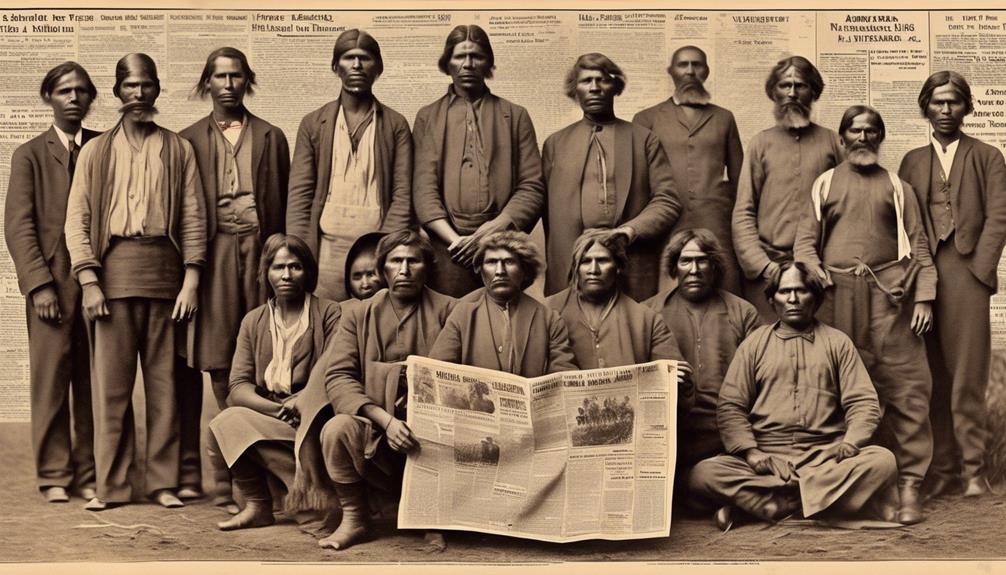
Pivoting from the impact of the Western Australia Act on Aboriginal rights, we now turn our attention to the historical ramifications of the Northern Territory Act on Indigenous communities in Australia. The Northern Territory Act, enacted in 1910, significantly impacted Aboriginal communities through its legal implications and enforcement, leading to the suppression of Indigenous resistance and the suspension of civil liberties.
- Martial Law and Colonial Military Enforcement: The Northern Territory Act provided colonial authorities with the power to declare martial law, allowing for the deployment of military forces to enforce colonial rule and suppress any form of Indigenous resistance.
- Aboriginal Rights Protection: Contrary to its name, the Northern Territory Act didn't protect Aboriginal rights. Instead, it facilitated the implementation of protection acts, which were often used to justify the removal of Indigenous children from their families, contributing to the Stolen Generations.
- Impact on Aboriginal Communities: The Act had a profound impact on Aboriginal communities, as it entrenched the authority of native police forces and enabled the enforcement of harsh regulations against them.
- 1967 Referendum and Subsequent Changes****: The Act's influence persisted even after the 1967 referendum, which sought to include Aboriginal people in the census and allow the Commonwealth to legislate for them. The Act's legacy continued to affect Indigenous communities until the eventual recognition of their land rights through the Land Rights Act.
The Northern Territory Act played a pivotal role in the suppression of Indigenous resistance and the subjugation of Aboriginal communities, contributing to the broader narrative of colonial oppression and the frontier wars during the early colonial period.
The South Australia Act

The South Australia Act, enacted in 1834, holds significance in the context of legal shooting regulations and the protection of Aboriginal rights.
This legislation established the framework for governance and land rights in South Australia, impacting the treatment and legal standing of Aboriginal communities.
Understanding the implications of the South Australia Act is crucial in examining the historical and legal factors contributing to the shooting of Aboriginals in Australia.
Legal Shooting Regulations
Under the South Australia Act, the legal shooting regulations pertaining to Aboriginals are outlined in a manner that ensures clarity and precision in the application of such measures.
This historical context reveals the legal implications of the regulations, indicating how they were used to suppress indigenous resistance and enforce the dispossession of land rights.
The impact on the Aboriginal community was devastating, contributing to the era of the stolen generations and severely infringing upon civil liberties.
The enforcement of these regulations not only resulted in the loss of lives but also perpetuated a culture of fear and oppression.
It's crucial to understand the deep-seated implications of these regulations in order to fully comprehend the ongoing struggle for aboriginal rights protection and liberation.
Aboriginal Rights Protection
Amidst the historical backdrop of the South Australia Act, the protection of Aboriginal rights emerges as a pivotal aspect in understanding the complexities of indigenous rights and the ongoing struggle for liberation.
The Act, enacted in 1834, laid the foundation for the establishment of the colony of South Australia and included provisions aimed at safeguarding Aboriginal land and cultural preservation. However, these protections were often undermined by subsequent legislation and discriminatory practices.
The struggle for Aboriginal rights and the preservation of their cultural heritage continues to be a pressing issue in contemporary Australia. Efforts to address historical injustices, empower indigenous communities, and ensure the protection of their land and cultural practices remain essential for achieving true liberation and equality.
It's imperative to advocate for policies that genuinely uphold Aboriginal rights and support their cultural preservation.
The Victoria Act
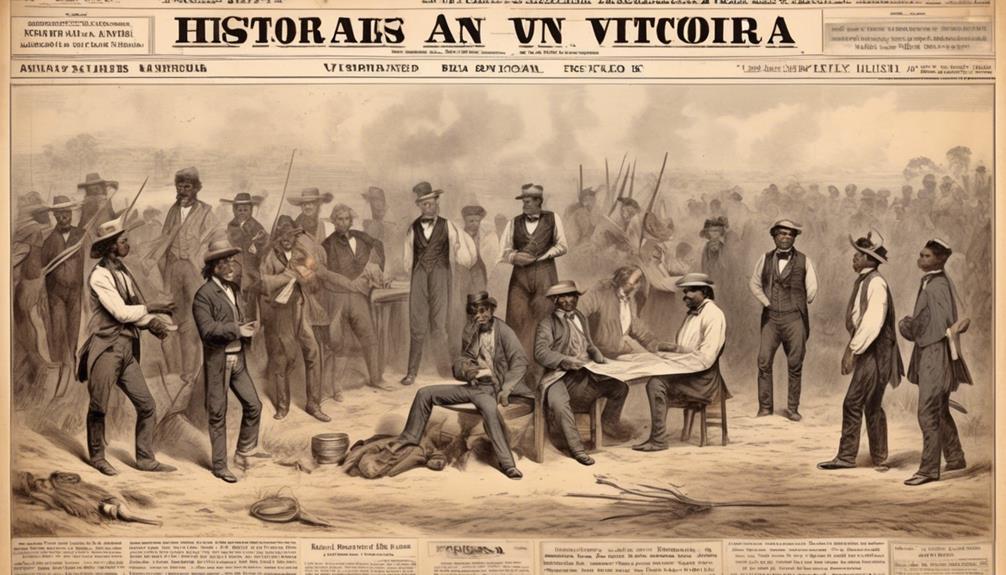
In Victoria, the legislation governing the use of lethal force by law enforcement officers has been a subject of intense debate and scrutiny. The Victoria Act, along with other similar acts such as the Queensland Act, Northern Territory Act, South Australia Act, New South Wales Act, and Tasmania Act, has had significant implications for Aboriginal rights and the enforcement of laws in Australia. The impact of these acts on communities, particularly Indigenous communities, has been profound and has been a major point of contention in the ongoing struggle for civil liberties and equality.
- The Victoria Act and similar legislation have historically been used to justify the use of lethal force against Aboriginal people, particularly during periods of martial law and frontier wars.
- These acts have also played a role in the establishment and operation of native police forces, which were often utilized to suppress Indigenous resistance and enforce colonial authority.
- Additionally, the legal framework provided by these acts has intersected with other policies such as the Stolen Generations and land rights legislation, contributing to the systemic marginalization of Aboriginal communities.
- The ongoing impact of the Victoria Act and its counterparts continues to shape the relationship between law enforcement and Indigenous peoples, highlighting the need for ongoing reform and recognition of historical injustices.
As we continue to advocate for liberation and justice, it's crucial to confront the legacy of these laws and their impact on Aboriginal communities, working towards a future where all individuals are treated with dignity and respect.
The New South Wales Act
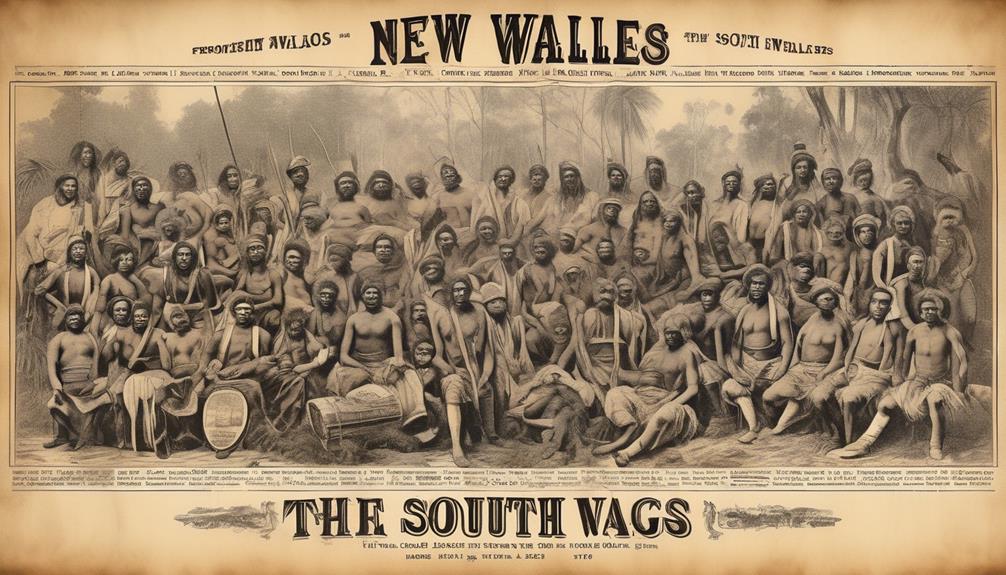
What impact does the New South Wales Act have on the legal use of lethal force by law enforcement officers in Australia?
The New South Wales Act of 1867, while intended to regulate the use of firearms and ensure public safety, had significant legal implications, enforcement, and consequences for indigenous communities and societal attitudes. This act granted the police extensive powers to use firearms in various situations, including to disperse public meetings. The ambiguity of the law and its broad interpretation by law enforcement had a profound impact on indigenous communities.
The Act was enforced in a manner that disproportionately affected Aboriginal peoples, often leading to the use of lethal force in situations where non-lethal alternatives could have been employed. The New South Wales Act not only contributed to the loss of indigenous lives but also perpetuated a sense of fear and distrust towards law enforcement within Aboriginal communities.
The broad discretion given to officers under the Act allowed for the escalation of violence and the reinforcement of negative societal attitudes towards Aboriginal people. This legislation played a pivotal role in shaping the power dynamics between law enforcement and indigenous communities, contributing to a legacy of systemic discrimination and injustice.
Understanding the historical context and impact of the New South Wales Act is crucial in addressing ongoing issues of police violence and discrimination against indigenous peoples. It serves as a stark reminder of the systemic challenges that continue to affect Aboriginal communities and underscores the importance of re-evaluating laws and law enforcement practices to ensure justice and equality for all.
The Tasmania Act
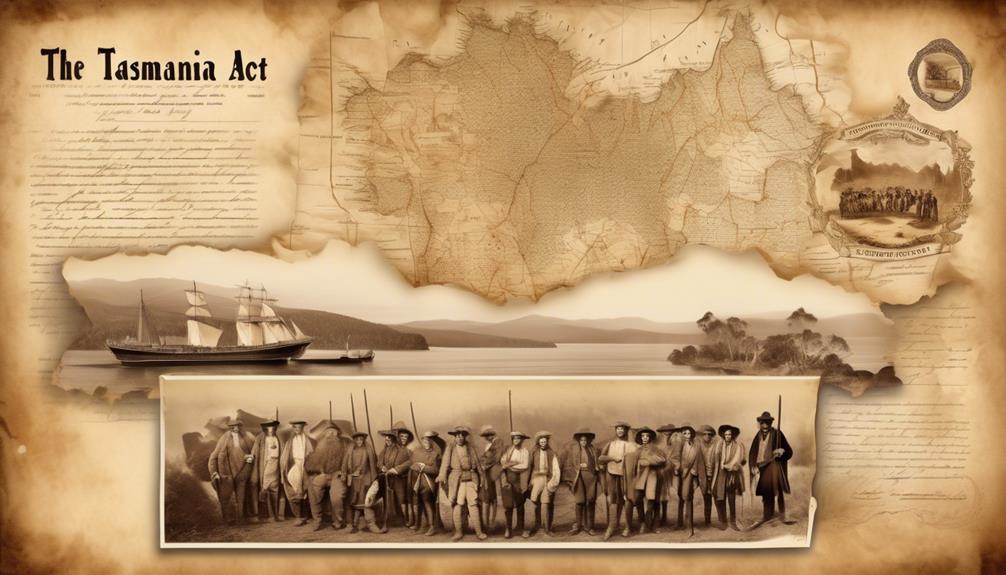
Analyzing the historical implications and legal ramifications of the Tasmania Act reveals its significant impact on the use of lethal force by law enforcement officers in Australia. The Tasmania Act, enacted in 1855, was a piece of legislation that heavily restricted the rights of Aboriginal people in Tasmania. This act allowed for the forced removal of Aboriginal people from their traditional lands and facilitated the loss of their cultural heritage. Furthermore, it effectively legalized the use of lethal force against Aboriginal people under certain circumstances, perpetuating a culture of violence and oppression.
The Tasmania Act stripped Aboriginal people of their land rights and autonomy, further marginalizing them within their own country.
The historical context of the Tasmania Act is rooted in colonialism and the systematic disenfranchisement of Aboriginal communities, perpetuating a cycle of violence and discrimination.
The Tasmania Act had long-lasting effects on the Aboriginal population, contributing to intergenerational trauma and ongoing social inequities.
The Tasmania Act serves as a stark reminder of the systemic injustices faced by Aboriginal people and the urgent need for meaningful reconciliation and redress.
Understanding the impact of the Tasmania Act is crucial in comprehending the historical and ongoing struggles for Aboriginal rights in Australia. It underscores the entrenched legacy of colonial oppression and the urgent need for societal transformation and justice. Recognizing the historical context and implications of the Tasmania Act is essential in dismantling systems of oppression and working towards a more equitable and liberated future.
The 1967 Referendum
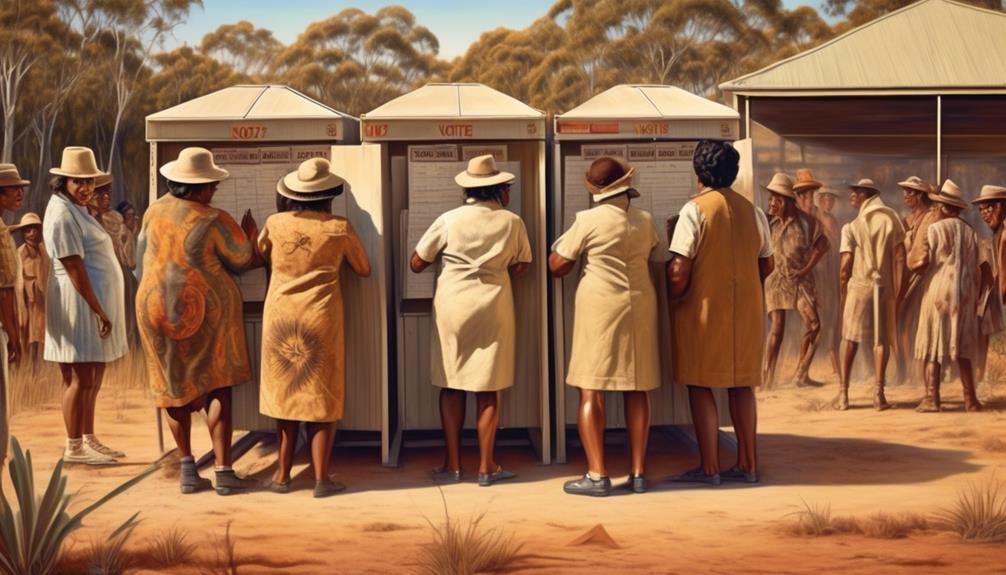
The 1967 Referendum marked a pivotal moment in Australian history, catalyzing significant changes in the legal recognition and rights of Aboriginal people. This landmark event sought to address the exclusion of Indigenous Australians from the national census and the Constitution.
Prior to the referendum, Aboriginal people weren't included in the census, rendering them virtually invisible and denying the government crucial data for policy-making and resource allocation. The referendum impact was profound, as over 90% of Australians voted in favor of amending the Constitution to allow the federal government to legislate specifically for Indigenous peoples and to include them in the national census. This resounding show of support reflected a growing awareness and acknowledgment of the need to rectify historical injustices and address the systemic discrimination faced by Aboriginal communities.
The successful passage of the referendum had far-reaching implications for Indigenous rights. It enabled the federal government to create laws and policies aimed at improving the lives of Aboriginal people and addressing the disparities they faced. It also signaled a shift in the national consciousness, signaling a commitment to recognizing and respecting the rights of Indigenous Australians.
The 1967 Referendum was a critical step towards dismantling legal barriers and institutionalized discrimination, setting the stage for further advancements in Indigenous rights and paving the way for a more inclusive and equitable Australia.
Land Rights Act
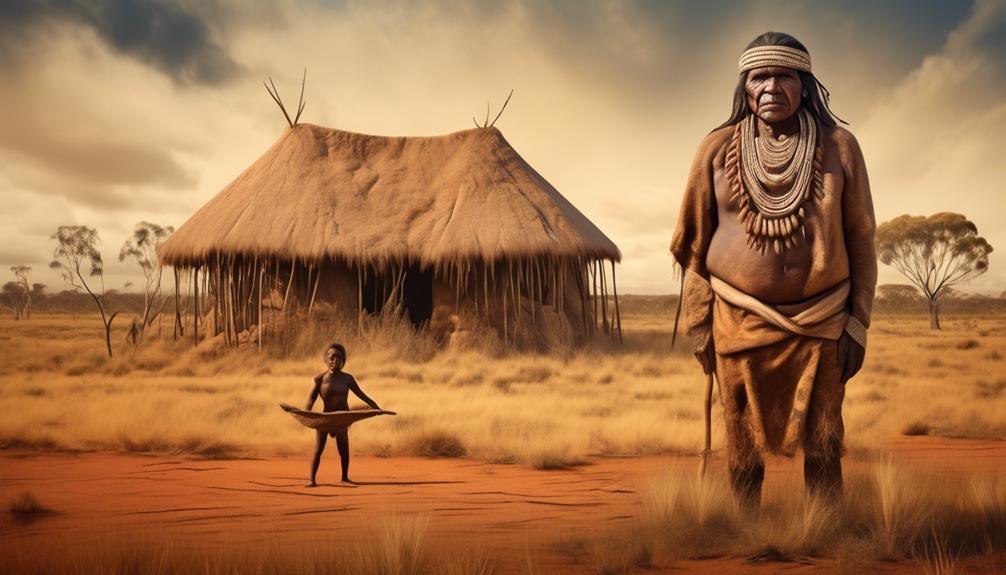
After the progressive shift in national consciousness brought about by the 1967 Referendum, the Land Rights Act emerged as a crucial legislative development in shaping the rights and recognition of Aboriginal peoples in Australia. The Land Rights Act holds significant importance for the Indigenous population, as it recognizes their historic connection to the land and addresses the injustices they've faced. This landmark legislation has far-reaching implications for Aboriginal sovereignty and self-determination, paving the way for a more equitable future.
- Recognition of Traditional Ownership: The Land Rights Act acknowledges the traditional ownership of land by Aboriginal peoples, providing a legal framework for the restitution of land that was unjustly taken from them.
- Empowerment of Aboriginal Communities: This legislation empowers Aboriginal communities to make decisions about the management and use of their traditional lands, allowing them greater control over their own destinies and resources.
- Cultural Preservation: The Land Rights Act plays a crucial role in preserving Aboriginal culture and heritage by safeguarding their connection to the land, which is integral to their spiritual and cultural identity.
- Challenges to Colonial Dominance: By asserting the rights of Aboriginal peoples to their land, the Land Rights Act challenges the colonial dominance that has historically marginalized and oppressed Indigenous communities.
The Land Rights Act stands as a testament to the ongoing struggle for justice and equality, marking a significant milestone in the journey towards recognizing and respecting the rights of Aboriginal peoples in Australia.
Stolen Generations
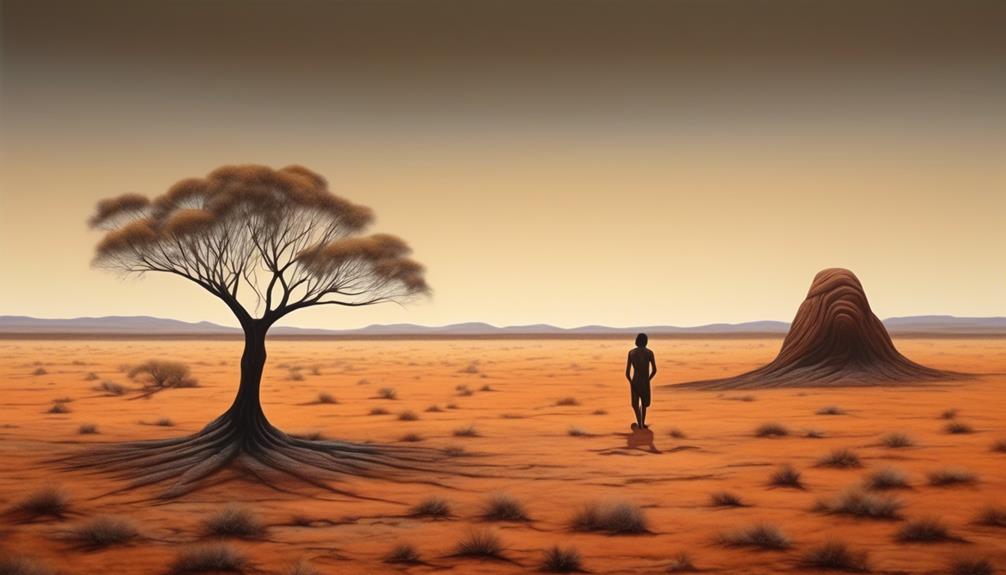
During the twentieth century, Indigenous children in Australia were forcibly removed from their families, a practice that has come to be known as the Stolen Generations. This systematic removal had a profound impact on families, resulting in cultural assimilation, trauma, and systemic discrimination. The following table outlines the complex effects of the Stolen Generations and the ongoing efforts towards healing and reconciliation.
| Effects of the Stolen Generations | Description |
|---|---|
| Impact on families | The forced separation caused immeasurable pain and suffering for Indigenous families, leading to a loss of culture, language, and connection to community. |
| Trauma and healing | The trauma inflicted on the children and their families has had long-lasting effects, requiring comprehensive healing and support programs within Indigenous communities. |
| Systemic discrimination | The Stolen Generations revealed the deeply ingrained systemic discrimination against Indigenous people within the Australian government and wider society, perpetuating a cycle of intergenerational trauma. |
The Stolen Generations have left a legacy of deep hurt and suffering within Indigenous communities, demanding truth-telling, restorative justice, and redress. Efforts towards healing and reconciliation involve acknowledging the past injustices, providing support for community healing, and advocating for redress and compensation for the survivors and their families. It is essential to continue these efforts to address the ongoing impact of the Stolen Generations and work towards a future of empowerment and liberation for Indigenous Australians.
Frequently Asked Questions
What Were the Specific Circumstances in Which It Was Legal to Shoot an Aboriginal Person in Australia?
We must understand the historical legal justifications for shooting an Aboriginal person in Australia.
Colonial attitudes and land ownership played a significant role in the legalization of such actions. Indigenous resistance threatened the expansion of colonial settlers, leading to laws that allowed the use of lethal force.
This context sheds light on the systemic oppression and violence faced by Aboriginal people, highlighting the need for liberation and justice.
How Were the Laws and Regulations Regarding the Shooting of Aboriginal People Enforced in Different Regions of Australia?
Enforcement methods for laws on shooting Aboriginal people varied widely across regions in Australia. These variations had a significant impact on indigenous communities and shaped public perception of the issue.
Some areas had stricter enforcement, while others tolerated or even condoned violence against Aboriginal people. These regional differences deepened the divide between indigenous and non-indigenous populations and contributed to ongoing injustices.
What Were the Consequences for Individuals Who Were Found to Have Unlawfully Shot an Aboriginal Person During the Early Colonial Period?
The consequences for unlawfully shooting an Aboriginal person during the early colonial period were severe. Legal implications varied, but generally included imprisonment, fines, or even capital punishment. These consequences reflected the disregard for Aboriginal rights and the prevailing colonial attitudes.
The enforcement of these laws often favored the perpetrators, perpetuating a cycle of injustice. The historical context reveals a grim reality of systemic oppression and the struggle for justice.
How Did the Legal Status of Shooting Aboriginal People Change After the 1967 Referendum and the Implementation of Land Rights Acts?
After the 1967 referendum and the implementation of land rights acts, the legal status of shooting Aboriginal people underwent a profound transformation.
Land rights and Indigenous rights gained recognition, altering the historical context of legal implications for such actions.
These changes marked a pivotal moment in acknowledging the rights and sovereignty of Indigenous peoples, paving the way for a more just and equitable society.
Were There Any Significant Legal or Policy Changes Related to the Shooting of Aboriginal People That Occurred During the Stolen Generations Era?
Significant legal changes related to the shooting of Aboriginal people during the Stolen Generations era included the continued erosion of Indigenous rights. The colonial-era laws that sanctioned violence against Aboriginal peoples persisted, perpetuating the cycle of oppression and dispossession.
The systemic targeting of Indigenous communities further entrenched the trauma of the Stolen Generations. These policies exemplified the ongoing struggle for justice and equality for Aboriginal people in Australia.
Conclusion
In conclusion, it's shocking to think that there was a time when it was legal to shoot an Aboriginal person in Australia.
The history of violence and discrimination against Indigenous Australians is a dark and painful chapter in our nation's story.
It's important to acknowledge this past and work towards reconciliation and justice for Aboriginal and Torres Strait Islander peoples.
We must strive to create a future where all Australians are treated with equality and respect.
Nayeli is our dedicated Editor in Chief, bringing her passion for words and keen editorial eye to every piece of content we produce. With years of experience in the field, she ensures that every article and publication meets the highest standards of quality and clarity. Nayeli’s commitment to storytelling and her deep understanding of our mission make her an invaluable leader in our team.
